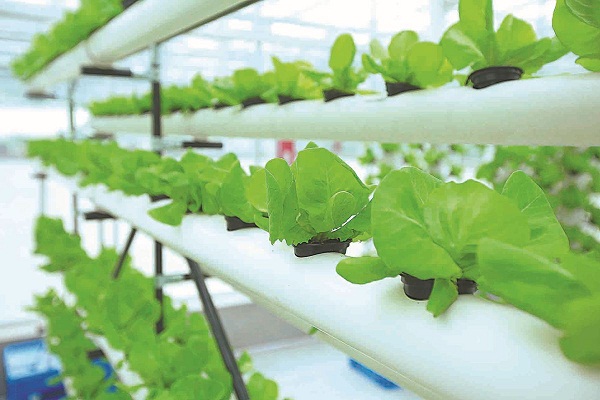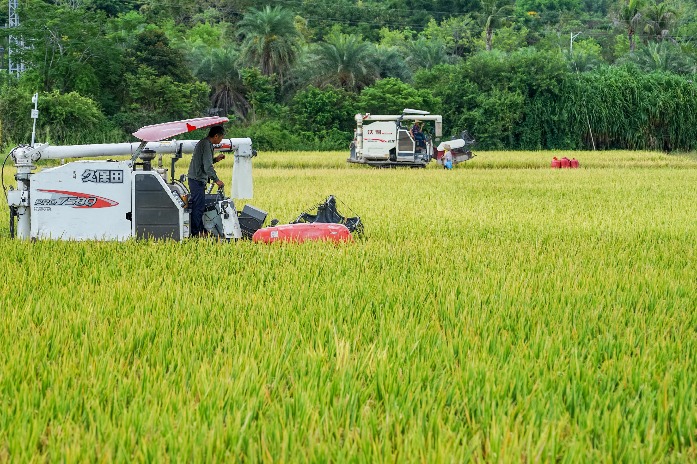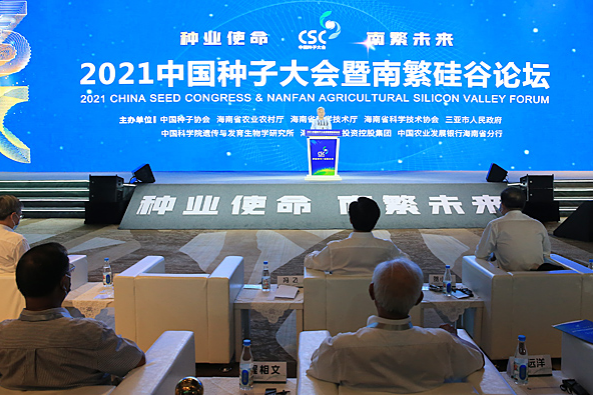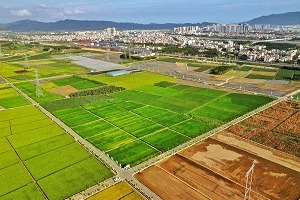
Romaine lettuce with a higher vitamin C content than kiwi fruit is grown in a test laboratory in Sanya. ZHAO XIN/FOR CHINA DAILY
Field research
Chinese seed scientists are making continuous progress with field research.
Output of hybrid rice, developed by Chinese agri-scientists led by Yuan Longping, has grown from 6 metric tons per hectare in the 1970s to 15 metric tons. Hybrid rice is now being grown in more than 30 countries and regions, with the total area devoted to the crop overseas surpassing 7 million hectares, according to official reports.
Meanwhile, scientists from Zhejiang University have acquired new variety rights for high-starch-resistant rice, which is good news for diabetes patients.
Chinese scientists developing saline-alkali tolerant rice, also known as seawater rice, plan to grow such crops on 6.67 million hectares in eight to 10 years. Some 30 billion kilograms of grain will be harvested annually, feeding about 80 million people, according to managers of the Qingdao Saline-Alkali Tolerant Rice Research and Development Center in Shandong province.
Cheng Xiangwen, 86, honorary president of Hebi Academy of Agricultural Sciences in Henan province, who has shuttled between Henan and Hainan for the past 56 years, said, "We need to constantly cultivate new varieties in order to ensure high yield and high quality."
Known for cultivating 39 varieties of corn grown widely nationwide, the veteran expert is still working hard to create varieties with a strong resistance to pests and disease.
Lyu Yuping, general manager of Longping (Hainan) Biotechnology Co, said sample corn imported from Brazil is growing well at a Nanfan base. Tall plants with strong stems and leaves have been produced after cultivation and transplantation.
"The improved corn does not need to be sprayed with pesticides to control insects, which can improve yield and enhance the competitiveness of Chinese seeds," Lyu said.
"Seeds planted with 'China chips' will be sold overseas, while Longping scientists will continue to cultivate new corn varieties suitable for northern and southwest areas of the country," Lyu added.
A look at the history of seed breeding in Hainan shows that varieties have expanded from crops such as rice, corn and cotton to a diverse list that includes more than 40 species such as oil-bearing crops, potatoes, fruit trees, vegetables, flowers, medicinal herbs, aquatic products, livestock and poultry.
Official data show that rice and wheat crop varieties in China are 100 percent self-sufficient thanks to advantageous and competitive seed breeding technology.
However, there are still considerable gaps between China and developed countries in terms of unit yield or quality of seeds for important crops and animals, including corn, soybeans, pigs, cows, sheep and many vegetable varieties, according to government officials.
But such officials and other experts see sound prospects for the country's seed industry, along with implementation of the national action plan and newly revised Seed Law to vitalize the seed industry, in addition to the promotion of smart and digital agriculture nationwide.
They believe these national attempts will help spawn a commercial seed breeding system to speed up the transformation and industrialization of innovative seed sciences and technologies.
Meanwhile, Bao Hongwen, mayor of Sanya and head of the Yazhou sci-tech city, said offseason seed breeding programs have been integrated with high-efficiency agriculture for Hainan's tropical climate, especially for fruit and vegetables, ensuring local farmers benefit from close involvement with seed breeding programs.
A center for exotic tropical flowers and fruit in Qionghai on the east coast of Hainan has successfully cultivated about 150 breeds, including the yellow dragon fruit and finger lime, bringing economic benefits and job opportunities to local people.




